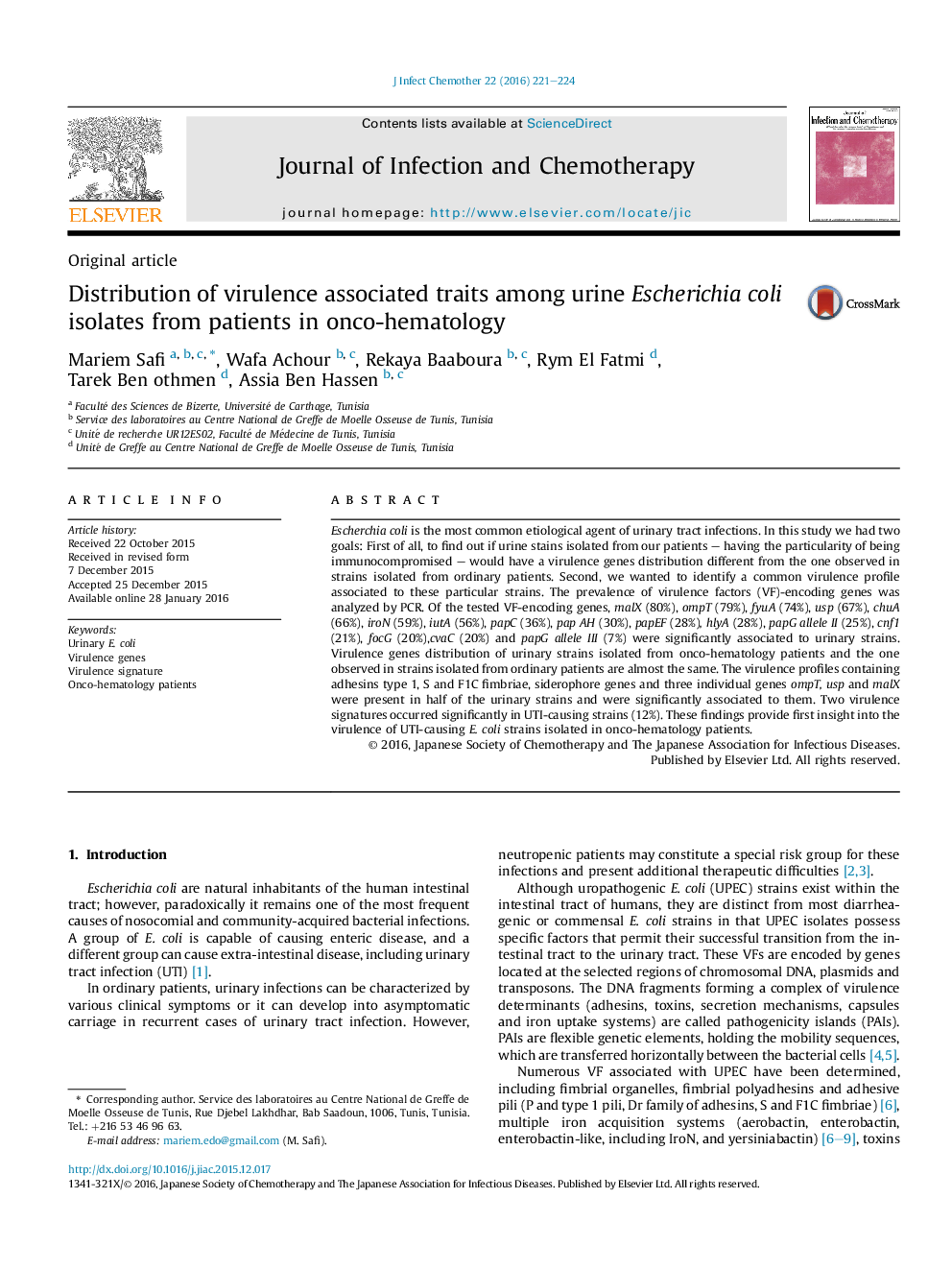| Article ID | Journal | Published Year | Pages | File Type |
|---|---|---|---|---|
| 3376747 | Journal of Infection and Chemotherapy | 2016 | 4 Pages |
Escherchia coli is the most common etiological agent of urinary tract infections. In this study we had two goals: First of all, to find out if urine stains isolated from our patients – having the particularity of being immunocompromised – would have a virulence genes distribution different from the one observed in strains isolated from ordinary patients. Second, we wanted to identify a common virulence profile associated to these particular strains. The prevalence of virulence factors (VF)-encoding genes was analyzed by PCR. Of the tested VF-encoding genes, malX (80%), ompT (79%), fyuA (74%), usp (67%), chuA (66%), iroN (59%), iutA (56%), papC (36%), pap AH (30%), papEF (28%), hlyA (28%), papG allele II (25%), cnf1 (21%), focG (20%),cvaC (20%) and papG allele III (7%) were significantly associated to urinary strains. Virulence genes distribution of urinary strains isolated from onco-hematology patients and the one observed in strains isolated from ordinary patients are almost the same. The virulence profiles containing adhesins type 1, S and F1C fimbriae, siderophore genes and three individual genes ompT, usp and malX were present in half of the urinary strains and were significantly associated to them. Two virulence signatures occurred significantly in UTI-causing strains (12%). These findings provide first insight into the virulence of UTI-causing E. coli strains isolated in onco-hematology patients.
